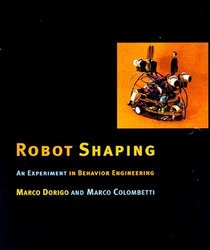Search -
Robot Shaping: An Experiment in Behavior Engineering (Intelligent Robotics and Autonomous Agents)
Robot Shaping An Experiment in Behavior Engineering - Intelligent Robotics and Autonomous Agents
Author:
foreword by Lashon Booker "[This] book gives a clear and comprehensive exposition of [the authors] extensive experience in integrating reinforcement learning and autonomous robotics. Their continuing contribution is to the development of a distinct engineering discipline (`Behavior engineering') through which such robots can be created. I am ex... more »
Author:
foreword by Lashon Booker "[This] book gives a clear and comprehensive exposition of [the authors] extensive experience in integrating reinforcement learning and autonomous robotics. Their continuing contribution is to the development of a distinct engineering discipline (`Behavior engineering') through which such robots can be created. I am ex... more »
ISBN-13: 9780262041645
ISBN-10: 0262041642
Publication Date: 11/6/1997
Pages: 203
Rating: ?
ISBN-10: 0262041642
Publication Date: 11/6/1997
Pages: 203
Rating: ?
0 stars, based on 0 rating
Genres:
- Computers & Technology >> Computer Science >> AI & Machine Learning >> General
- Computers & Technology >> Computer Science >> AI & Machine Learning >> Machine Learning
- Computers & Technology >> Computer Science >> AI & Machine Learning >> Robotics
- Computers & Technology >> Computer Science >> AI & Machine Learning >> Intelligence & Semantics
- Computers & Technology >> Computer Science >> AI & Machine Learning >> Computer Mathematics
- Computers & Technology >> Computer Science >> AI & Machine Learning >> Experimentation
- Computers & Technology >> Programming >> Web Programming >> Agents




